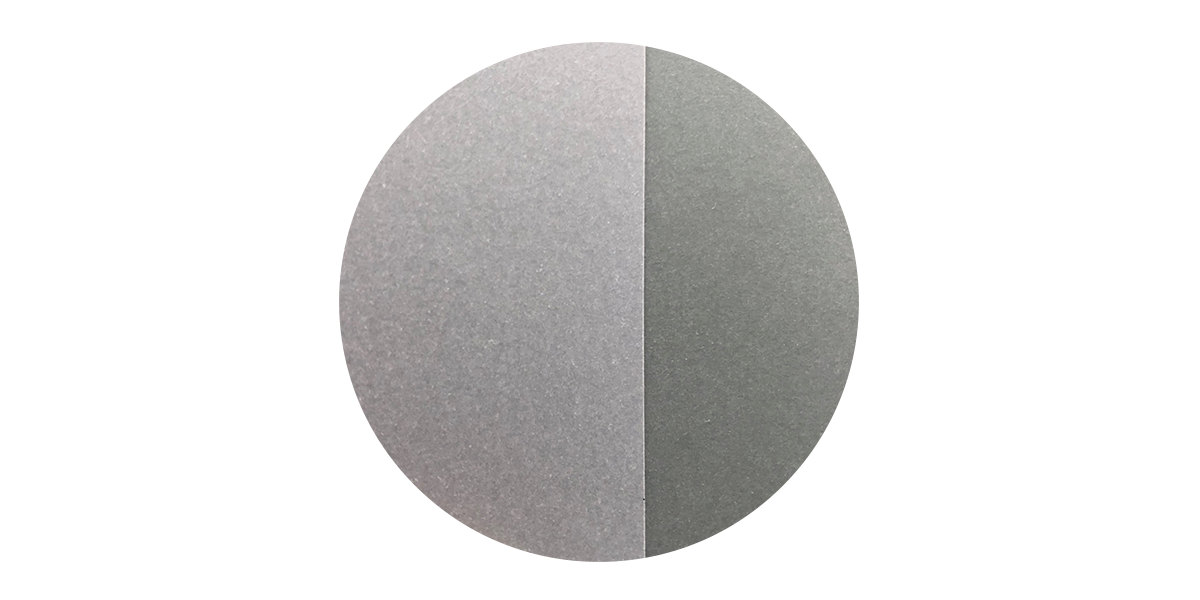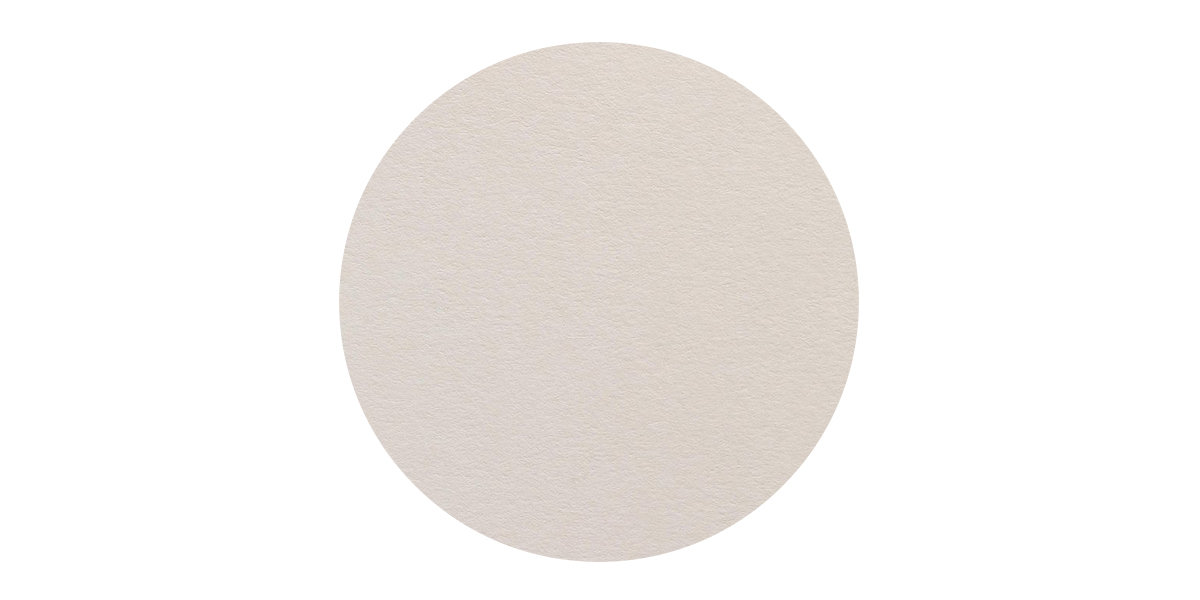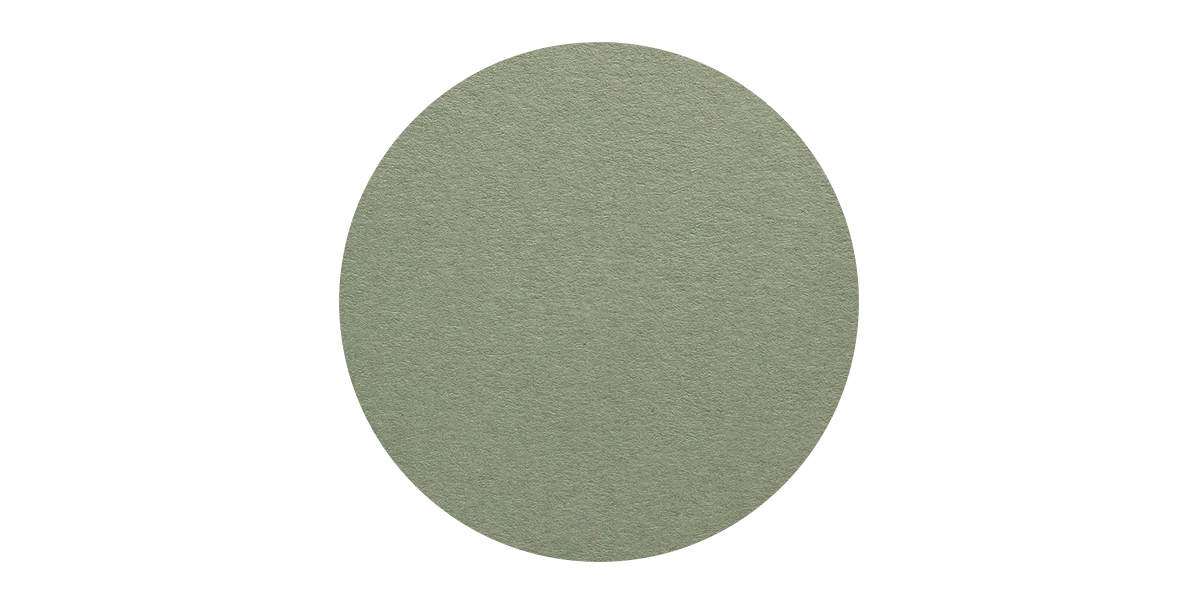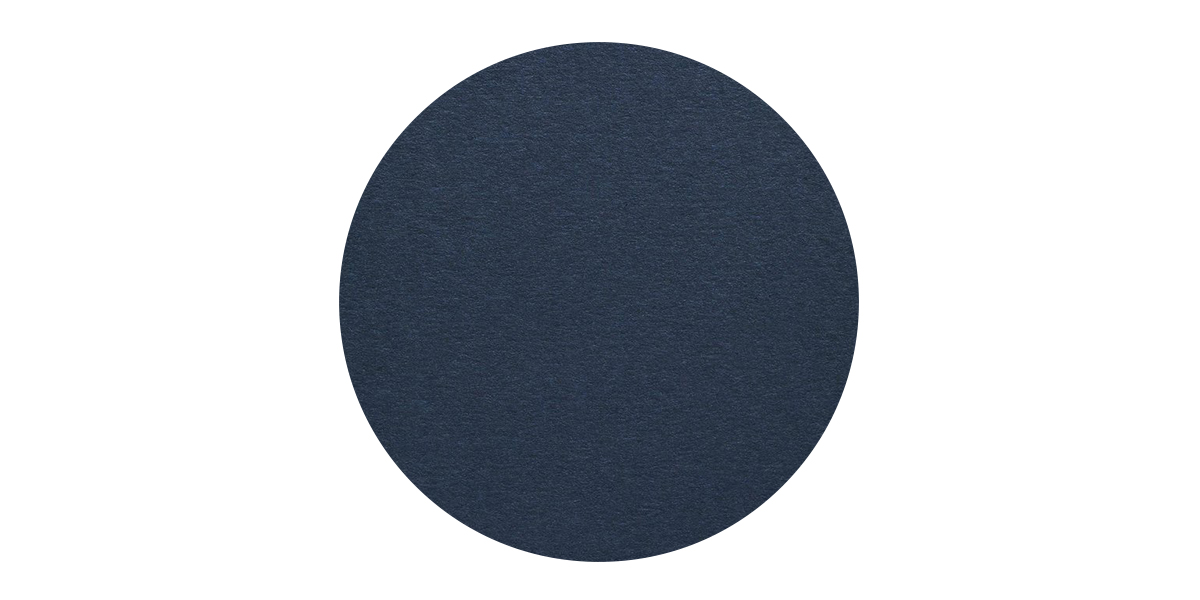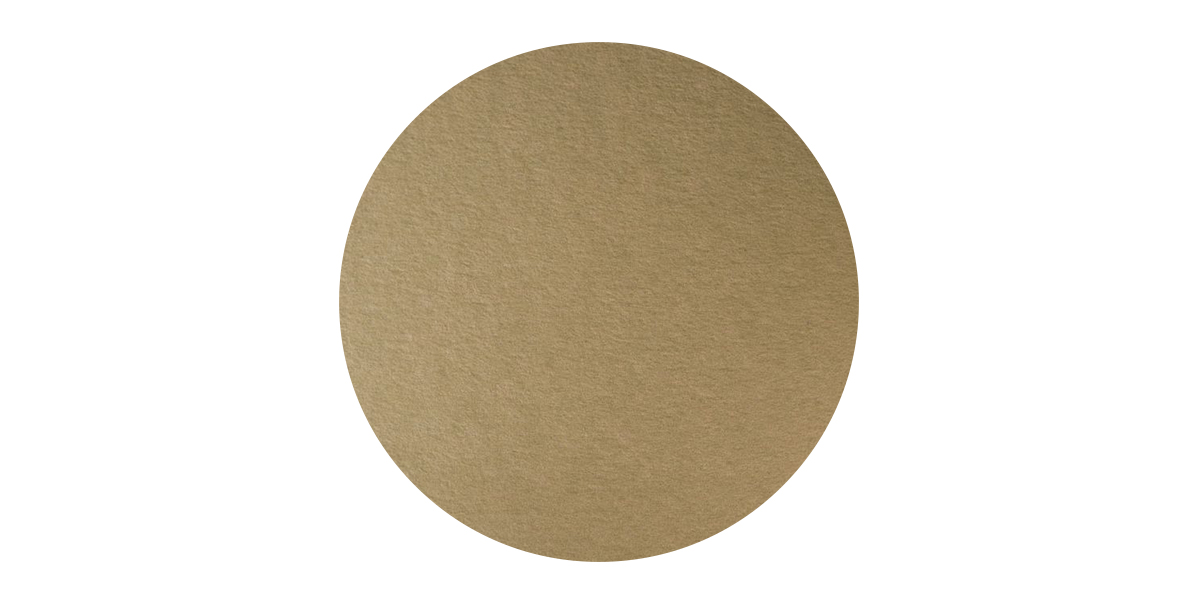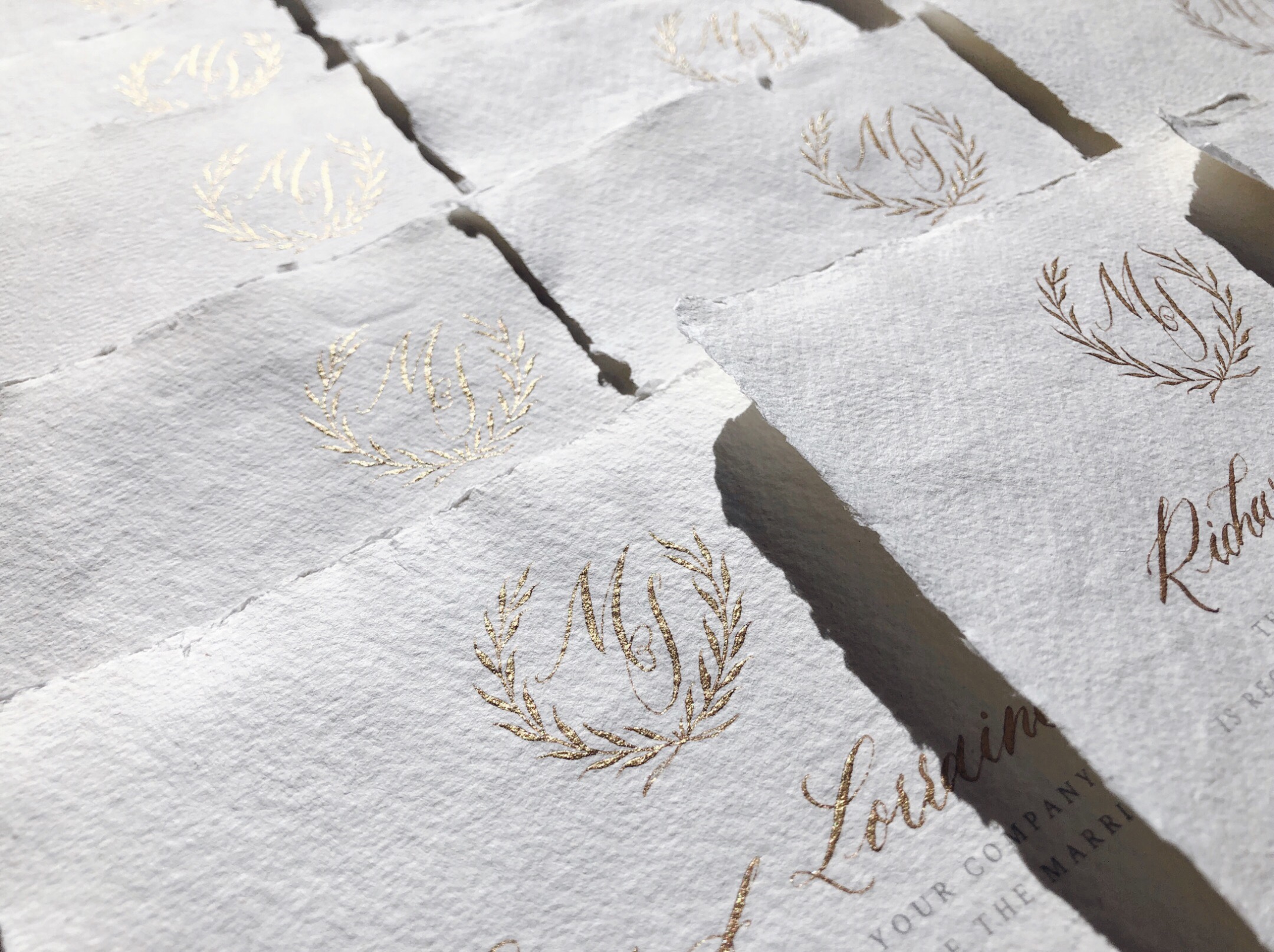Paper choices
I work with a selection of premium papers that are suitable for the printing methods used to produce the stationery. Below is a short guide on paper types, thickness and printing methods suitable for each type.
Card stock
350 gsm for main stationery
135 gsm for envelopes
Card stock used is uncoated, soft to the touch and ever so slightly textured.
Suitable for digital print, white ink print and hand finishing, however can be used for letter pressing and foiling as well.
House colour is soft white.
Handmade paper
150 gsm for digital print
100 gsm / 135 gsm for envelopes
320 gsm for letterpress and foiling
Handmade paper is made form 100% cotton, is naturally textured and has deckled edges.
Cotton paper
300 gsm or 600 gsm
Cotton paper is as the name suggests made from 100% cotton, is very sift and slightly textured. Due to it being made from cotton, the paper is soft and lends itself best for letterpress and foil stationery. Due to the cost of the paper, I would not advise this as the first choice for digital printing or hand finishing projects.
Vellum paper
90 gsm for overlays, 140 gsm for invitations
This semi transparent velum paper is the perfect delicate addition to any stationery. I mostly use it for stationery overlays as it is a lovely way to keep the stationery together within an envelope, but it also works lovely with foiling for invitations and envelope liners.
Paper and envelope colours
Card stock and standard paper envelopes are available in the below colours.
A mixture of these tones can be used throughout your stationery and other colours can be sourced upon request. Darker colour paper will require a specialist printing method - foiling or white ink printing for stationery and white ink printing or hand addressing in white/metallic inks for envelopes.
Ice white
Soft white
Mist grey
Pale grey
Dark grey
Ecru
Sand
French blue
Forest green
Burgundy
Navy
Black
Speciality paper colours
Specked paper is available in a selection of colours.
Available as thick card for main stationery or overlays and envelope liners (not envelopes). These natural colours are perfect for understated minimalist wedding stationery.
Natural
Sand
Mustard
Brown
If you are looking for a good bulky paper, I also work with 35% cotton fibre super soft paper that comes in lovely natural colours.
Available in 150gsm, 300 gsm, 450 gsm or 850gsm. Works best with letterpress, emboss or foiling. Can be used for main stationery, overlays, liners and envelopes.
Soft white
Sand
Clay
Green
It is important for me to note that all paper sourced is of high quality and I only work with environmentally responsible manufacturers that are FSC certified.
Print and finishes
I offer multiple print and finish options and having worked in the print industry I know my way round other methods we can explore together. Certain papers fit certain print methods best, but if you have seen my previous work, you will now that I love mixing different paper types and printing methods to achieve a unique look for your stationery.
Digital print
This is the most common print method as this involves simply printing digital artwork on your selected paper.
The process is straight forward, works for a large variety or papers and can offer a quick turnaround.
Digital print on card stock
Letterpress
Letterpress printing method involves production of the design on metal or polymer plates that are then pressed directly onto the paper creating an indent which can be deeper or flatter as per your preference. Letterpress works particularly well with cotton paper as it suitable for embossing.
Letterpress also offers blind emboss option where the text or illustration only appear as indents on the paper.
I have a small Adana letterpress I operate in my studio. I do get slightly giddy every time I get to bring it out.
Pale grey letterpress on handmade paper. Photo: Sarah Brooke Photo
Blind emboss on card stock. Photo: Sarah Brooke Photo
Foiling
As the title suggests, this printing method foils the artwork onto the paper. The method involves production of metal plates that are used to apply foil on the paper using heat - this is why you will have heard of hot foiling and hot stamping. Stamp foiling allows the use of almost all papers and other materials such as linen bookcloth, velvet, leather etc.
Recently digital foiling has become more popular as it is more budget friendly with eliminating the need of producing stamps - artwork is foiled to previously printed areas using heat. This method only allows the use of very smooth card paper and the results are less even, however a lovely finish can still be achieved.
Stamp foil produces an even cover and has a slight indent on the print which you can feel while tracing over with your fingers.
Digital foil sits flat on top of the paper and can be less stable for more intricate patters.
Hand finishing
To truly add one of a kind detail to your stationery, I offer hand finishing which means that all calligraphy detail is handwritten on each invitation. This method allows for metallic inks to be used - gold, silver, copper, bronze, rose gold.
Hand drawn wedding monogram with individually handwritten guest names
White ink printing
A recent favourite of mine is white ink printing as it allows the use of dark colour papers and the finish truly is one of a kind. White ink prints slightly different to normal colour inks and with slightly textured paper you will also get a slight texture to the print.
White ink print on forest green escort cards. Photo: Helena Abraham
White ink printed navy envelopes
Other
There is a variety of other printing and finishing techniques I can offer including, but not limited to embossing, debossing, thermographic printing, die cutting and stamping. I always love trying new things and challenging myself so just get in touch if you have anything crazy in mind.




